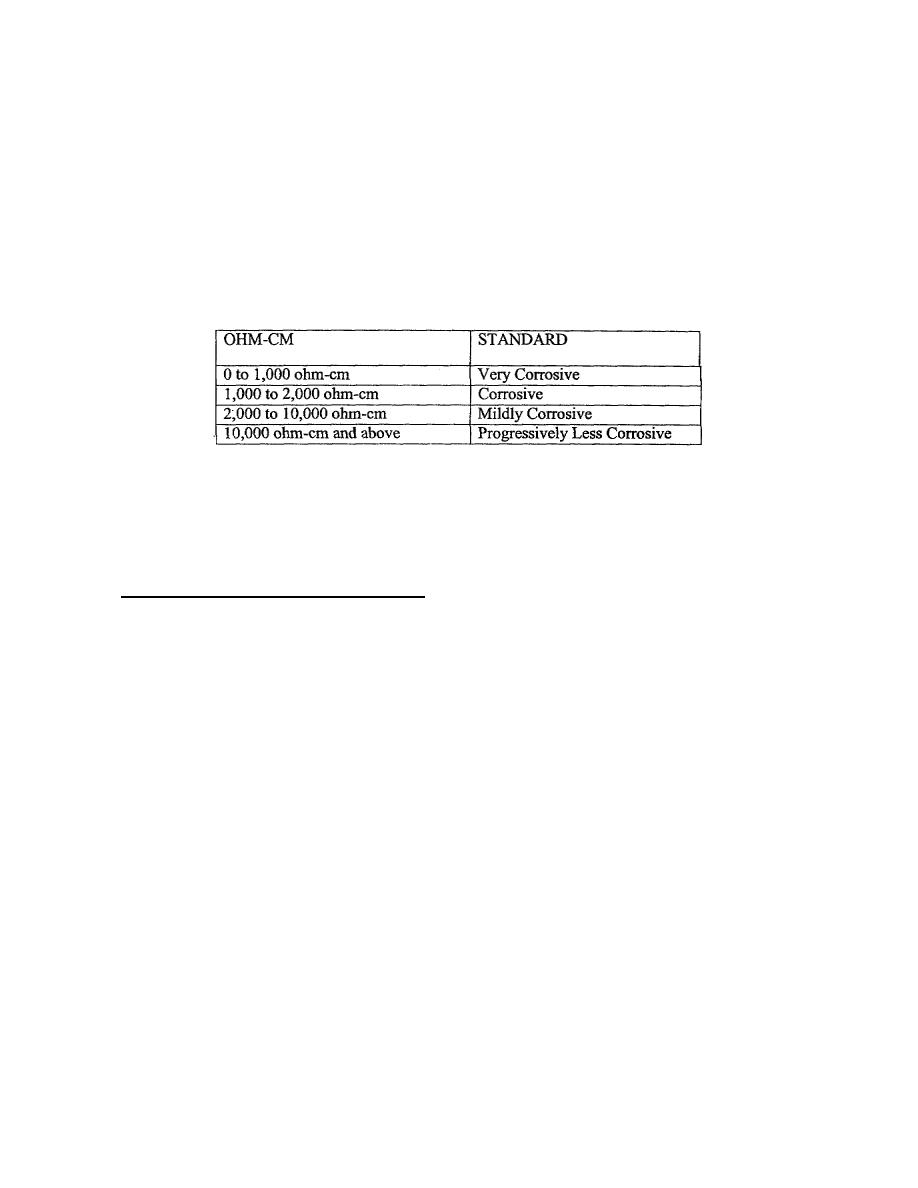
d. Resistance in soil to electrical flow will vary due to the type of soils and their makeup (for example,
moistness, minerals).
(1) Low soil resistivities result in low circuit resistances. This means higher current flow and more
corrosion.
(2) High soil resistivities result in high circuit resistances. This means lower current flow and less
corrosion.
(3) Resistance reading are in "ohm-cm," an example of soil resistivity and what the standard is:
Table 16-1 Soil resistivity rating scale
NOTE: The rating scale is only a guide. If for example, general soil resistivities in an area are well above 10,000
ohm-cm, this does not mean that there will be no corrosion... just that the tendency is less.
(4) The preferred resistance is a reading at or above 30,000 ohm-cm, which indicates good drainage,
less mineral buildup.
6.
Differential Aeration (Oxygen Concentration).
a. This simply means that when "oxygen" from the air (aeration) is more readily available through the
electrolyte to one part of a structure than to another, there will be a difference in potential between the two.
b. That part of a structure having restricted oxygen availability will be anodic (anode) and will corrode.
c. Another example of differential aeration is a buried pipeline. The bottom of the pipeline trench is of
dense soil, while the relative loose backfill permits greater oxygen availability to the top of the pipe and water
drainage (electrolyte) to be present.
(1) In such a situation, DC current can flow from the bottom (anode) of the pipe to the (Cathode) top
of the pipe.
(2) This type of corrosion is more difficult to detect as it is not visible on the underside of the pipe.
QM5200
16-4



 Previous Page
Previous Page
